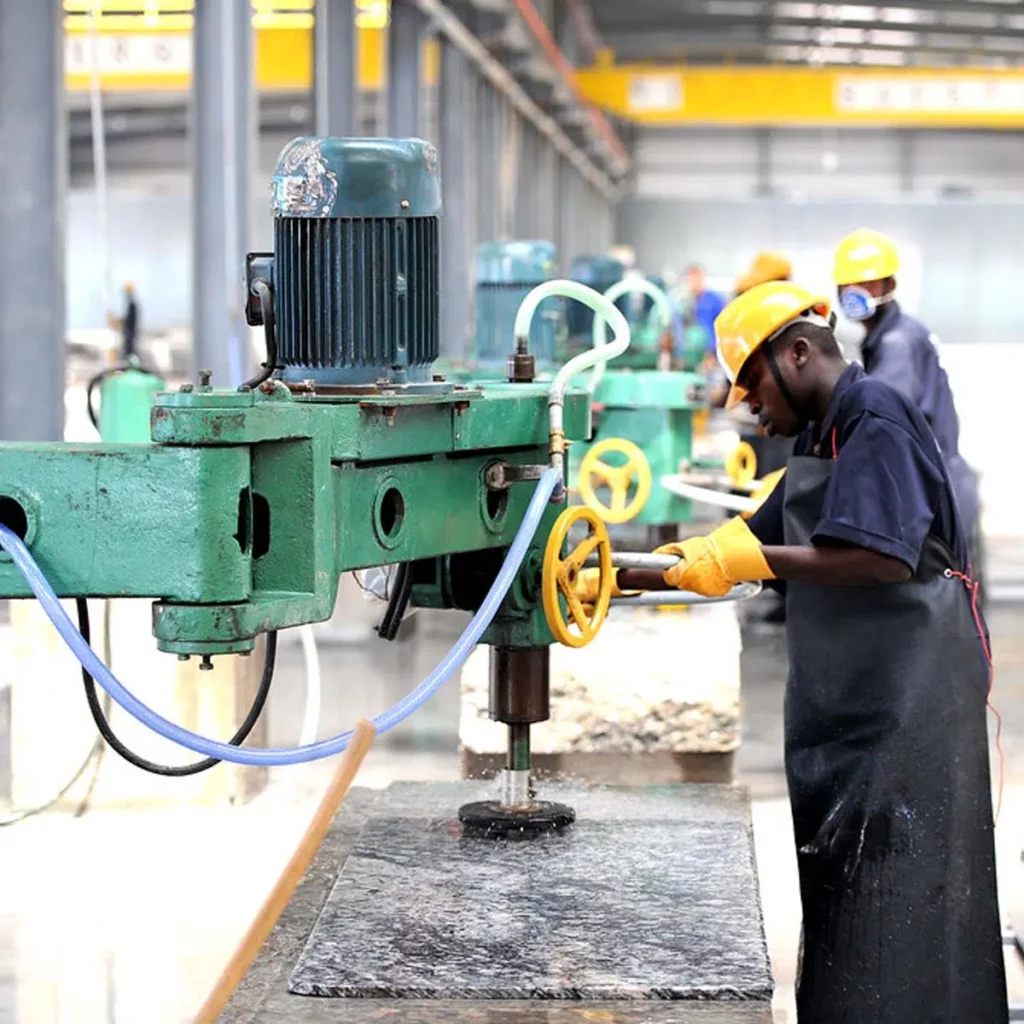African industrialization is showing progress, according to a report by the ADB, AU and UNIDO.
African industrialization is showing steady progress, with 37 of 52 African countries becoming more industrialized over the past eleven years, according to a new report from the African Development Bank (ADB), the African Union (AU) and the United Nations Industrial Development Organisation (UNIDO).
African industrialization analyzed through 19 indicators
The Africa Industrialization Index (AII) report provides a country-level assessment of 52 African countries’ progress across 19 key indicators. The report will enable African governments to identify comparator countries to benchmark their own industrial performance and identify best practices more effectively.
The Index’s 19 indicators cover manufacturing performance, capital, labor, business environment, infrastructure and macroeconomic stability. The Index also ranks African countries’ industrialization across three dimensions: performance, direct determinants and indirect determinants.
Direct determinants include such endowments as capital and labor and how these are deployed to drive industrial development. Indirect determinants include enabling environmental conditions such as macroeconomic stability, sound institutions and infrastructure.
Rankings
South Africa maintained a very high ranking throughout the 2010-2021 period, followed closely by Morocco, which held second place as of 2022. Rounding out the top six over the period are Egypt, Tunisia, Mauritius, and Eswatini.
AII’s inaugural edition
The ADB, the AU and UNIDO jointly launched the inaugural edition of the AII on the sidelines of the African Union Summit on Industrialisation and Economic Diversification in Niamey, Niger. Abdu Mukhtar, ADBank Director for Industrial and Trade Development, represented the institution at the launch event.
He said that while Africa had shown encouraging progress in industrialization over the 2010-2022 period, the Covid-19 pandemic and Russia’s invasion of Ukraine had set back its efforts and highlighted gaps in production systems. “The continent has a unique opportunity to sort out this dependency by further integrating and conquering its own emerging markets,” said Mukhtar.
He added: “The African Continental Free Trade Area is creating a once-in-a-lifetime single market opportunity of 1.3 billion people and total aggregate consumer and business spending of up to $4 trillion creates an opportunity to enhance their trade and production linkages and finally reap industrial competitiveness from regional integration as other regions have done.” The ADB has invested up to $8 billion over the past f years under its Industrialise Africa High-5 priority. In the pharma sector alone, it intends to spend at least USD 3 billion by 2030.
Falling contribution to global manufacturing
Building productive industry will be integral to Africa’s development, offering a path to accelerated structural transformation, creating formal jobs at scale and inclusive growth. However, Africa’s share of global manufacturing has declined to the current level of less than 2%. More proactive industrial policies are seen as critical to reversing the trend. However, these are knowledge-intensive and require a detailed understanding of the constraints and opportunities that each country faces.
Top performers
During the coverage period, Djibouti, Benin, Mozambique, Senegal, Ethiopia, Guinea Rwanda, Tanzania, Ghana and Uganda all improved by five or more places in the rankings. The top performers are not necessarily those with the biggest economies, but those countries that generate high manufacturing value-added per capita, with a substantial proportion of manufacturing goods bound for export. North Africa remains the most advanced African region in industrial development, followed by Southern Africa, Central Africa, West Africa and East Africa.
